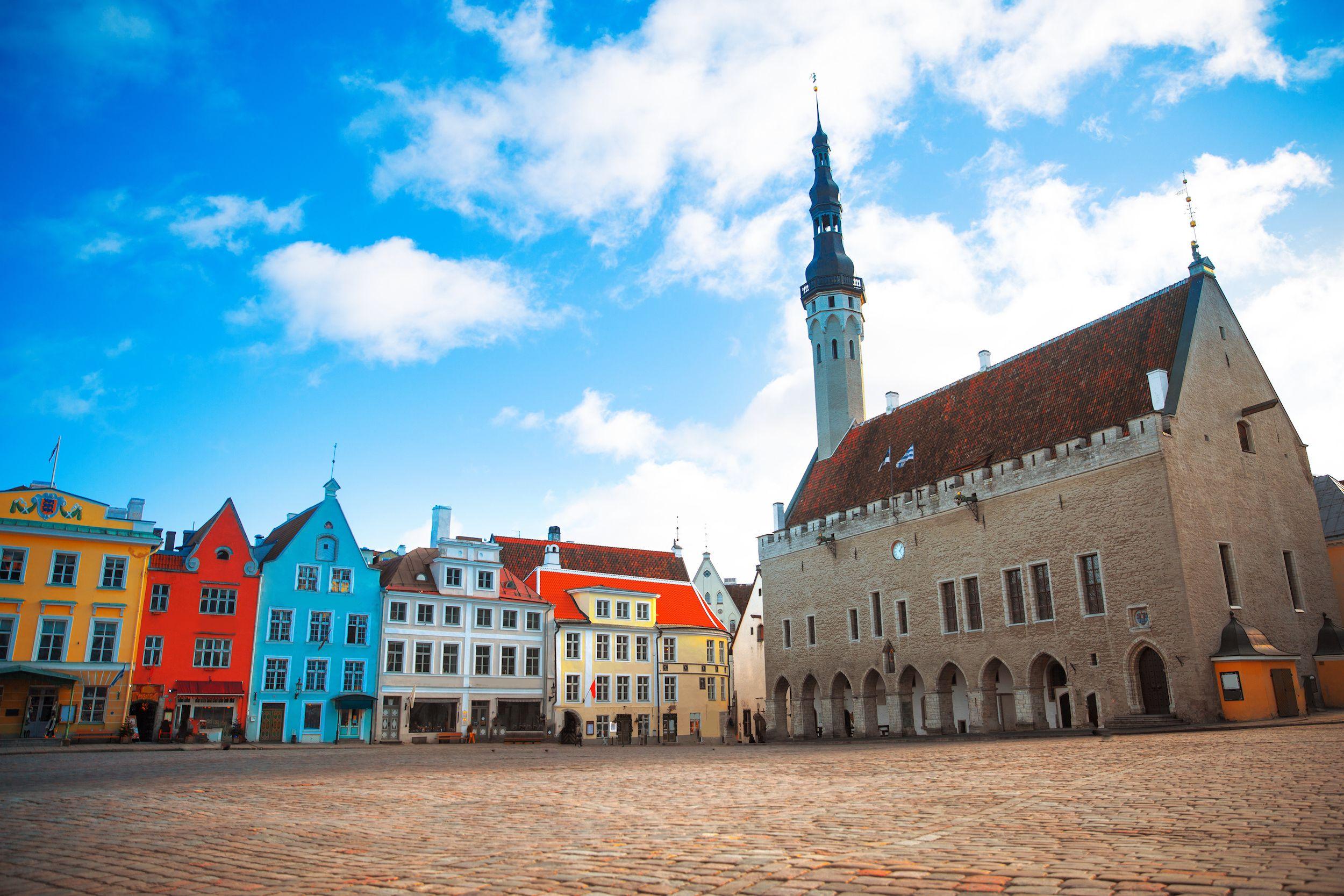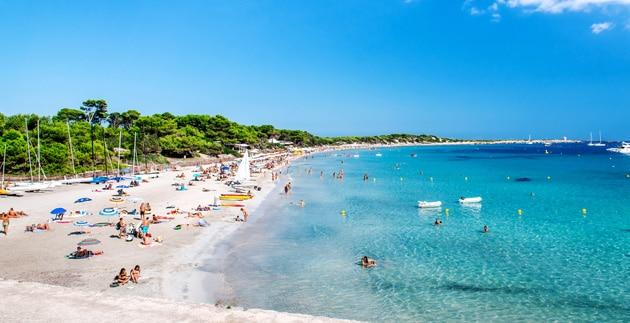Estonia is not hard to distinguish, as it is a completely unique country. Although it has similar geographical features and historical backgrounds to Latvia and Lithuania, it is very different culturally, and the country that is most akin to it ethnically and linguistically is rather Finland. The two countries, which share many traditions, were, however, separated by 50 years of Soviet rule in Estonia. For the past three centuries, the country has also been linked to Russia, although these two states are as similar as a swallow and a bear (their respective national symbols) could be.

The medieval centre of Tallinn, Estonia ©Skreidzeleu/Shutterstock
Tallinn's medieval lanes
If you are still a victim of the prejudice that 'ex-Soviet' is synonymous with gloomy and banal and that all tourist traps are prosaic, then Tallinn will surprise you by proving otherwise. Indeed, this city has charm to spare, having managed to marry the modern with the medieval, which together create a lively and original atmosphere. Tallinn is a heady mix of ancient church spires, glass skyscrapers, baroque palaces, fine restaurants, giant ramparts, glittering shopping malls, shabby wooden houses and cafés in sunny squares, with a few legacies of its Soviet past to liven up the picture.
Increasingly sophisticated without being too antiseptic, looking towards the future while embracing the past, Tallinn is a truly fascinating city.

A small fishing village in Lahemaa National Park, Estonia ©Westend61/Getty Images
Lahemaa National Park
Estonia's largest rahvuspark (national park) covers an unspoilt, rural area of 725 square kilometres, with a very picturesque coastline and hinterland that make it a perfect holiday resort for the inhabitants of the nearby capital. A microcosm of the country's natural beauty, the park encompasses a deeply indented coastline with several peninsulas and bays, as well as 475 square kilometres of forests, lakes, rivers and marshes in the pine-scented hinterland, and several sites of historical and cultural interest. The landscape is mostly flat or slightly undulating: the highest point is only 115 metres above sea level, and the stony terrain, the areas called alvar where the soil surface is very thin, and the large erratic boulders (brought here from Scandinavia by the action of glaciers) are all typically Estonian features.
Today, the main local attraction is the beach, but from 1945 to 1991 the entire shoreline of the park was a border zone, manned by the military and equipped with a two-metre high barbed wire fence to keep villagers away from the sea.
Tartu, the spiritual capital
Tartu claims to be the spiritual capital of Estonia and its inhabitants speak of a special vaim (spirit) of the past that can be perceived in the wooden houses and imposing buildings, as well as in the beauty of the parks and riverside.
Tartu is home to Estonia's main university, with a student population of almost one-fifth of residents. The university breathes life into this historic and green town, providing it with a particularly lively nightlife for its size. On long summer nights, students who have not left the city to go to the beach gather on the hill behind the town hall to flirt and drink.
Its beautiful centre has numerous buildings with sober 18th-century lines, many of which have been used for innovative functions. Besides boasting a number of tourist attractions, including interesting art galleries and museums, Tartu is also a convenient starting point for exploring southern Estonia.

The red Viirelaid lighthouse ©Adrienne Pitts/Lonely Planet
The windmills of Saaremaa
For Estonians, Saaremaa (literally, 'island land') is synonymous with wide open spaces, expanses of fir trees and pure air, as well as bottled water, vodka and beer with a high alcohol content. Estonia's largest island (roughly the size of Luxembourg) is still shrouded in pine, fir and juniper trees, and its windmills, lighthouses and tiny villages seem unscathed by the passage of time. In Soviet times, the whole island was off limits (having become a space base with a primordial radar system) even to Estonians from the 'mainland', who had to apply for a permit to visit. Thus, the island experienced very little industrial development and its rural charm has remained virtually intact.
This unique and traditional landscape seems to be in perfect accord with the unquenchable pride of Saaremaa, which has always had a strong independent vocation and was the last patch of Estonia to fall to invaders. Its people have customs and songs that only exist here, and their epic reference is not the legend of Kalevipoeg, as in the rest of the country, but Suur Tõll, a local hero who fought numerous battles throughout the island against devils and demons.
Sign up for our newsletter! For you weekly travel tips, special offers, stories from the world and 30% discount on your first order.

The windy Muhu coast ©Adrienne Pitts/Lonely Planet
The village of Koguva in Muhu
Kuguva, on the western headland of Muhu, is a fairy-tale and exceptionally well-preserved place, now protected as an open-air museum. The ticket allows you to visit the old school and two farms, one of which exhibits beautiful traditional textiles of the area and various costumes made with meticulous attention to detail, while the other is the birthplace of writer Juhan Smuul (1922-71), where you can browse among various buildings, one of which has a collection of Singer sewing machines.
The village is still densely populated - mostly by families who have lived here for generations - so respect the privacy of the inhabitants by staying in the museum areas.

A windmill in Seidla, Estonia ©Westend61/Getty Images
Pärnu, Estonia's summer capital
Local families, young holidaymakers and Finnish, Swedish and German holidaymakers join in a collective prayer for good weather as they stroll along the golden sandy beaches, through the vast parks and through the picturesque old town of Pärnu, Estonia's most important seaside resort. In these parts, the name Pärnu is synonymous with summer fun.
Pärnu stretches along both banks of the river of the same name, at the point where this watercourse flows into Pärnu Bay. Most of the interesting sights are concentrated along the southern bank, including the Old Town and the beach. The main street of the Old Town is Rüütli, overlooked by beautiful 17th-century buildings.
Pärnu's long, wide beach - characterised by volleyball courts, cafés and tiny changing cabins - is the main attraction here. The path that forms an arc around the beach is bordered by fountains and benches perfect for watching the promenade, and along Ranna puiestee, the avenue that runs parallel to the beach, are several buildings from the early 20th century. Opposite, the flower beds of the Rannapark make an ideal destination for a summer picnic.
Otepää, the winter capital
The small hill town of Otepää, 44 kilometres south of Tartu, is the centre of a picturesque area of forests, lakes and rivers, much loved by Estonians for its natural beauty and the many hiking, cycling and bathing opportunities it offers in the summer, as well as cross-country skiing in the winter. It is often referred to as the winter capital of Estonia, and on weekends in the cold season it becomes lively and crowded. Some have even nicknamed the area the 'Estonian Alps', referring not to its peaks, but rather to the fabulous ski slopes. The 63-kilometre Tartu Ski Marathon takes place here every year in February, but even in summer you will see cross-country skiers out and about on roller skis.
The main area of Otepää develops around the intersection of Tartu maantee, Võru maantee and Valga maantee, where you will find the most important square, shops and even a few residential streets. A grove separates this district from a smaller settlement on the lake, 2 kilometres to the southwest.

Stroomi beach in Tallinn ©dpedersen/Shutterstock
When to go
The most favourable weather conditions are from May to September, and although the weather in Tallinn and Pärnu is not always reliable during this period (especially in July and August), it is still the best season to visit the region.
Almost all festivals are held in summer and culminate with the solstice.
Cross-country skiers should not miss Otepää, the 'capital' of winter sports from December to March.
The Yuletide period is also unforgettable, with its Christmas markets and the centuries-old tradition (dating back almost 600 years) of setting up a Christmas tree in Tallinn's main square.

